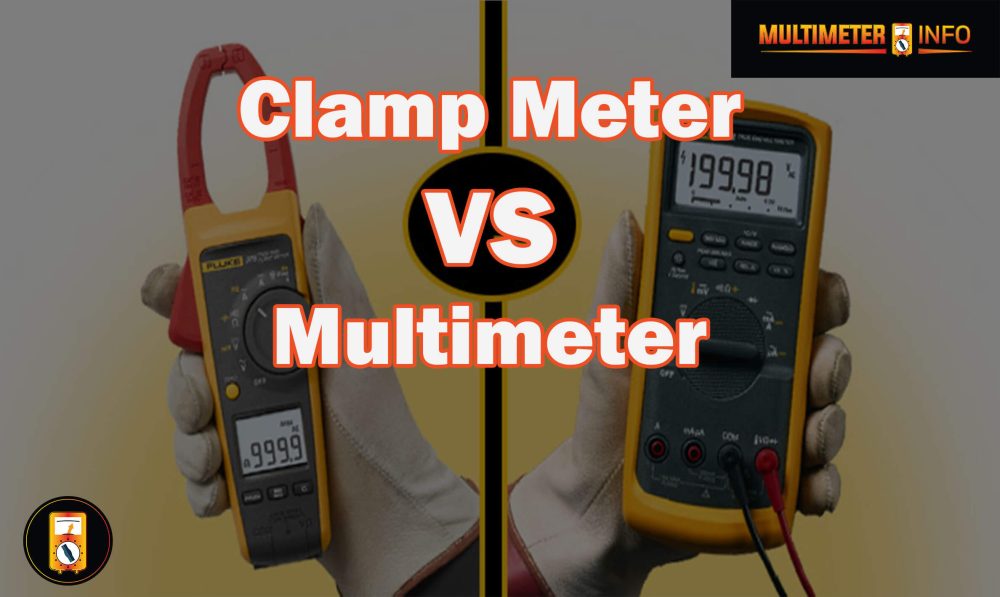Multimeters are an essential tool for any electrician, mechanic, engineer, or anyone else working with electrical components in the field. But what is a multimeter exactly? In this blog post, we’ll take an in-depth look at analog multimeters and how they work to give you a better understanding of why it’s so important for professionals to have these tools on hand. We’ll discuss the main parts of an analog multimeter such as its dials, leads, functions, and ranges before getting into some demonstrations that will show off the capabilities of this versatile tool. Whether you’re planning on buying one yourself or just want to know why your technician uses them when diagnosing problems – this guide covers everything you need to know about analog multimeters!
What is a multimeter?
A multimeter is a testing device used to measure voltage, current, resistance, and continuity in electrical circuits. Multimeters can also be used to determine whether components are operational or if a circuit is complete.
Multimeters often feature additional functions such as diode and transistor tests, frequency and capacitance measurements, temperature readings, and more. In general, they are portable instruments that allow for quick diagnosis of electrical issues. With the right combination of features and capabilities, users can troubleshoot any number of problems encountered in residential or industrial settings.
There are two main types of multimeter, the Analog Multimeter, and the Digital Multimeter. Analog multimeters use a needle to display readings for voltage, resistance, etc on a dial or scale. While analog models can be less accurate than digital versions, they have simple controls that make them easy to use. Additionally, analog meters are often less expensive than their digital counterparts. Digital multimeters feature a more precise readout with measurements shown in numerical form on an LCD screen.
How Does Analog Multimeter Work?
An analog multimeter is a versatile device used to measure and monitor the electrical properties of circuits. It can measure voltage, current, resistance, capacitance, and even temperature. Analog multimeters feature a pointer display, which offers excellent accuracy when taking readings. The basic setup in an analog multimeter consists of three main components: a meter movement, a power source, and a switchboard for connecting various circuit elements.
The meter movement is the heart of the multimeter that measures the electrical property being monitored at any given time. This electronic component uses magnetic fields to register any changes in values on its scale. Depending on the type of sensing element within it (which depends on what is being measured), different types of meters can be used such as AC/DC, ohm-meters, ammeters, and voltmeters. The power source supplies the electricity to the meter movement so that it can measure the desired electrical property accurately.
Most analog multimeters feature a single 9V battery as their power source. The switchboard is used to connect various circuit elements to measure different electrical properties such as current, voltage, and resistance. This switchboard also allows for testing individual components such as transistors or resistors by connecting them directly to two of its terminals while leaving the third terminal open. It also helps to isolate other potential sources of interference from being detected by the meter movement. Analog multimeters are relatively simple devices but they offer excellent accuracy and reliability. They are still widely used in industry and by hobbyists, thanks to their versatility and cost-effectiveness.
Parts of Analog Multimeter:
Analog multimeters are made up of several components that work together to measure different electrical values. The main parts include the dial, power switch, fuse, sensitivity control, and terminals. The dial is used to select the type of testing you want to do. It will usually have a range of settings from measuring resistance or current to checking capacitance and even temperature in some cases. You can also find models with specialized settings for testing transistors or other electronic components.
- Dial: used to select the type of testing you want to do.
- Power switch: turns the multimeter on and off for safety purposes.
- Fuse: protects the meter from an excessive voltage or current, preventing damage and extending its life.
- Sensitivity control: adjusts the amount of current that is allowed to flow through the terminals when measuring electrical values.
- Terminals: where you attach your probes to measure an electrical value such as voltage or resistance.
- Probe jacks: two slots into which you insert your probes while taking measurements with an analog multimeter.
- Switch selector: allows you to change between resistance, voltage, and other settings on the dial.
- Scale selector: allows you to choose the range of values you want to measure, such as 0-10V or 0-20kΩ.
- Test lead ports: two slots used to insert the test leads to take measurements.
- Pointer: indicates the value of current being measured on the meter’s scale.
A needle or light will move across a dial indicating volts, amps, or ohms depending on what type of measurement you are taking. Analog multimeters are important tools for testing electrical components and circuits in many fields from home repairs to industrial maintenance and auto repair shops.
Uses of Analog Multimeters:
Analog Multimeters are used to measure voltage, current, and resistance. They can also be used for testing continuity, checking diodes, and measuring capacitance. Additionally, analog multimeters are useful in troubleshooting automotive electrical circuits such as ignition systems and charging systems. With the proper probes and an understanding of how to use them safely, these tools can help diagnose faulty alternators or bad spark plugs. As a result of their versatile capabilities, analog multimeters remain popular among many electricians and technicians in the electrical field.
- Voltage Measurement: Analog multimeters are commonly used to measure AC/DC voltage and can be set up to measure both low and high values.
- Current Measurement: Multimeters are also capable of measuring current, such as when testing circuits for faulty components or checking the charge rate on a battery.
- Resistance Measurement: By connecting the probes in parallel, analog multimeters can measure resistance between two points in an electrical circuit.
- Continuity Testing: Analog multimeters are very useful for continuity testing which helps find breaks in wires and other electrical pathways by turning off power and measuring for resistance across the path being tested.
- Diode Testing: Through the use of an analog meter, you can measure the forward voltage drop of a diode and check for shorts when testing for faulty components.
- Capacitance Measurement: Analog multimeters are capable of measuring capacitance in circuit boards and other electrical components to help identify shorted or open elements on the board.
- Automotive Electrical Circuits Testing: By setting up an analog multimeter with proper probes, technicians in the automotive field can use them to accurately diagnose and troubleshoot problems with ignition systems, charging systems, and other electrical circuits inside vehicles.
- AC/DC Voltage Range Switching: With its range selector switch, digital meters allow for easy switching between AC/DC voltage measurements as well as high and low values so users don’t have to worry about damaging delicate components.
- Troubleshooting: With the proper probes and knowledge, analog multimeters can be very helpful in troubleshooting a variety of electrical issues such as shorts, breaks, or open pathways in a circuit board.
- Maintenance: Analog multimeters are also great for maintenance tasks such as checking the charge rate on batteries, testing fuses, and tracking down loose connections in wiring systems.
Analog Multimeters provide users with multiple uses and features that make them valuable tools for electricians and technicians alike. They can help diagnose faulty components as well as test circuits and measure values quickly and accurately. By understanding how they work, you can use these versatile tools to your advantage when dealing with any electrical job.
How do I use an Analog Multimeter?
You can use an analog multimeter to measure various types of electrical values such as voltage, current, and resistance. To use one, you’ll need to connect the probes to your circuit, then select a range on the dial appropriate for the quantity you want to measure. Once the probes are connected, you can view the results on the multimeter’s needle. It is important to use caution when working with electricity – be sure to check your voltage and current settings before connecting the probes. Additionally, always make sure that they are in good contact with the circuit being tested.
Finally, switch off all power sources before attempting to measure any values. Following these steps will ensure a safe and accurate reading! Once you have familiarized yourself with your analog multimeter, it should become an invaluable tool for troubleshooting electrical circuits. With practice and patience, you’ll soon be able to quickly determine whether something is not functioning correctly or if there are any other issues in your system.
Frequently Asked Questions:
It depends on your individual needs. Generally, Digital multimeters are more precise and easier to use, but analog multimeters can be better for measuring small signals. Additionally, digital multimeters can measure a wider variety of conditions while analog ones are more limited. Digital meters also tend to be less expensive than analog multimeters. Ultimately, it comes down to what you need the meter for and which type is best suited for that task.
Analog multimeters measure both AC and DC voltage, current, resistance, capacitance, and other values using a single meter. The analog refers to the fact that the measurements are displayed on an analog dial with a needle or pointer indicating what value is being measured.
Analog multimeters can measure voltage, current, and resistance. They can also measure continuity, capacitance, and frequency. In addition to these basic electrical measurements, some models can measure temperature, current flow through transistors, inductance, and other parameters. Certain analog multimeters may even offer additional features or specialized capabilities.
Conclusion:
Analog multimeters are a great choice when it comes to basic electrical diagnostics or general-purpose measurements. They are easy to use, reliable in providing accurate readings, and cost-effective. Whether you are a beginner or an experienced technician, an analog multimeter is an essential tool for troubleshooting, testing, and measuring electrical flows.






